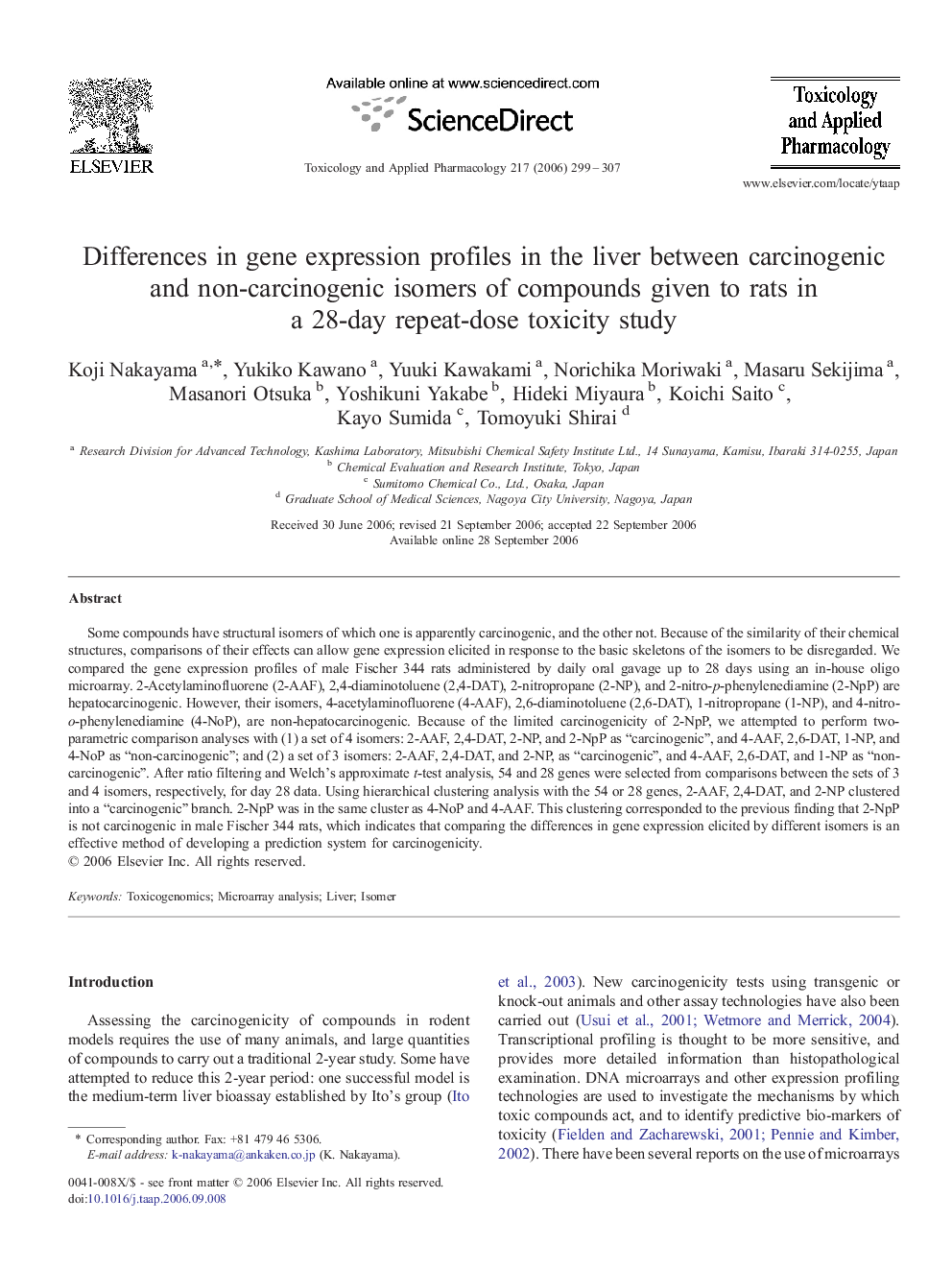| Article ID | Journal | Published Year | Pages | File Type |
|---|---|---|---|---|
| 2571987 | Toxicology and Applied Pharmacology | 2006 | 9 Pages |
Some compounds have structural isomers of which one is apparently carcinogenic, and the other not. Because of the similarity of their chemical structures, comparisons of their effects can allow gene expression elicited in response to the basic skeletons of the isomers to be disregarded. We compared the gene expression profiles of male Fischer 344 rats administered by daily oral gavage up to 28 days using an in-house oligo microarray. 2-Acetylaminofluorene (2-AAF), 2,4-diaminotoluene (2,4-DAT), 2-nitropropane (2-NP), and 2-nitro-p-phenylenediamine (2-NpP) are hepatocarcinogenic. However, their isomers, 4-acetylaminofluorene (4-AAF), 2,6-diaminotoluene (2,6-DAT), 1-nitropropane (1-NP), and 4-nitro-o-phenylenediamine (4-NoP), are non-hepatocarcinogenic. Because of the limited carcinogenicity of 2-NpP, we attempted to perform two-parametric comparison analyses with (1) a set of 4 isomers: 2-AAF, 2,4-DAT, 2-NP, and 2-NpP as “carcinogenic”, and 4-AAF, 2,6-DAT, 1-NP, and 4-NoP as “non-carcinogenic”; and (2) a set of 3 isomers: 2-AAF, 2,4-DAT, and 2-NP, as “carcinogenic”, and 4-AAF, 2,6-DAT, and 1-NP as “non-carcinogenic”. After ratio filtering and Welch's approximate t-test analysis, 54 and 28 genes were selected from comparisons between the sets of 3 and 4 isomers, respectively, for day 28 data. Using hierarchical clustering analysis with the 54 or 28 genes, 2-AAF, 2,4-DAT, and 2-NP clustered into a “carcinogenic” branch. 2-NpP was in the same cluster as 4-NoP and 4-AAF. This clustering corresponded to the previous finding that 2-NpP is not carcinogenic in male Fischer 344 rats, which indicates that comparing the differences in gene expression elicited by different isomers is an effective method of developing a prediction system for carcinogenicity.
